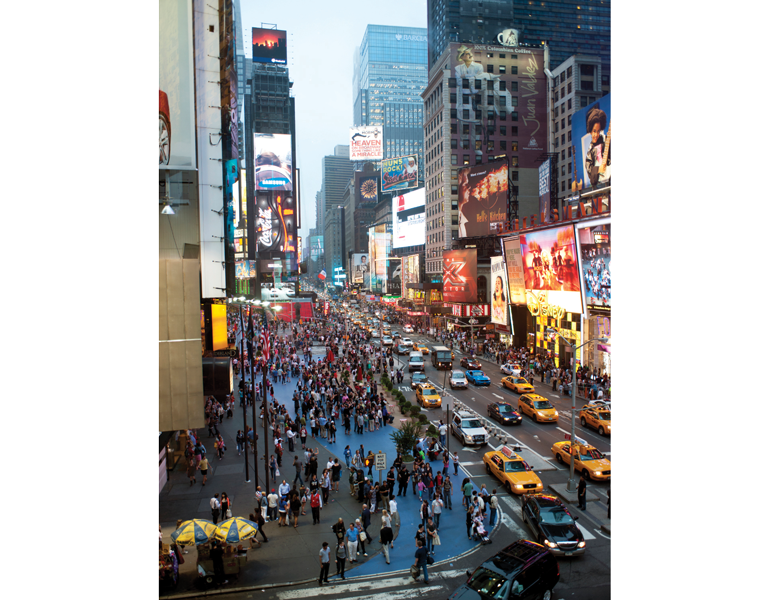In March, 2009, Nobel laureate Paul Krugman posted to his blog a chart of US industrial production in 1929 and 1930 (the first thirteen months of the Great Depression) comparing it to the interval from 2007 to 2009 (the thirteen first months of what Krugman referred to as “The Great Recession”). Noting that the drop in industrial production at the start of the Great Depression was about double that experienced in 2007-2009, Krugman concluded: “At this point we’re sort of experiencing half a Great Depression. That’s pretty bad.”1 With regard to trade, his take at the time was even less upbeat: “When it comes to international trade, actually it’s not the Great Depression, it’s worse,” he said in October 2009. “The scale of the collapse of world trade has been so large that it has produced a degree of international linkage that surpasses what even the pessimists imagined.”2
Of course, no sooner had Krugman proclaimed the US and global economies to be dead on arrival then both surged back to life. Indeed from the late summer of 2009, gains in US industrial production and global trade have been dramatic. Today they are both back on their historical trend – upward.
That wasn’t the first time Krugman rang alarm bells about another Great Depression. In 1998, during the Asian financial crisis, he expressed an equally dire outlook in a cover story for Fortune magazine: “Never in the course of economic events – not even in the early years of the Depression – has so large a part of the world economy experienced so devastating a fall from grace.” Without a drastic intervention, “we could be looking at a true Depression scenario – the kind of slump that 60 years ago devastated societies, destabilized governments, and eventually led to war.”3 What actually happened? The interventions Krugman advocated were not, in fact, enacted. Calamity did not ensue.
Contrast these cries of alarm with the following words from another eminent economist – call him “Economist B” – who similarly looked out a world in crisis but (unlike Krugman) glimpsed a deeper current of history flowing beneath the turbulence of the moment:
The prevailing world depression, the enormous anomaly of unemployment in a world full of wants, the disastrous mistakes we have made, blind us to what is going on under the surface – to the true interpretation of the trend of things.
For Economist B, the “true interpretation of the trend of things” featured the miracle of capital accumulation: by saving and investing in productive machines, each successive generation could produce more output than the one before, thereby increasing both per capita consumption and (potentially) per capita savings over time. As such a process followed its natural course, society would eventually reach a point where it no longer placed enough value on increasing future consumption. In other words, to use a technical term in economics: bliss.
Economist B cautioned that a bumpy ride along the way to bliss was to be expected, but not feared. “For the moment the very rapidity of these changes is hurting us,” he wrote. “We are being afflicted with a new disease… namely, technological unemployment. This means our discovery of means of economizing the use of labor is outrunning the pace at which we can find new uses for labor. But this is only a temporary phase of maladjustment.”
Who was this Panglossian dreamer? His name was John Maynard Keynes. He published these observations in 1930 in an essay titled “Economic Possibilities for Our Grandchildren.” At the start of the actual (not the later, imagined) Great Depression, Keynes looked about him and saw a world in which fundamentally positive trends were creating transitory challenges of adjustment. His greatest concern was that the increased efficiency of machinery would put people out of work.
Keynes understood what both his detractors and his followers, decades later, seem mostly to have forgotten: the trend of history is actually a bigger deal than the business cycle (whether on its upswings or its downturns). And what is the trend of history today? Simple: Ours is the most dynamic and promising era in human history. The majority of the world’s population is at last connecting with the global economy; billions of people are deriving benefits from the past five
centuries of technological and institutional innovation from which they have previously been excluded. As a consequence, human wellbeing will likely improve to a greater extent in coming decades than at any time in the past.
Regrettably – in no small part due to the efforts of fear-mongering pundits and politicians alike – this new reality still mostly inspires alarm rather than eager anticipation. In the US, in particular, the economic ascent of the global majority is mostly either blamed for the nation’s alleged decline or damned as the underlying cause for an array of global challenges, from climate change to water scarcity. Sure, Shanghai is suddenly full of whiz kids poised for dominance in the science fairs of the future, and villagers in Kenya can now receive money from a relative abroad on their cell phones. Good for them. But such changes aren’t going to do much for veterans returning home from Iraq and Afghanistan who can’t find work, or for families who lost their homes to foreclosure during the housing market meltdown. Paychecks for most US workers have not reversed the downward slide they began when Richard Nixon was president – back when the most high-tech object in an average American household was a Casio calculator. The number of people on food stamps exceeds the population of California. Much of Detroit remains a wasteland; New Orleans is struggling to regain its former glory; and everywhere else different versions of the new American Nightmare – persistent unemployment, lost wealth and exhaustion of technological possibilities – seem to be overtaking the American Dream. The coming prosperity? Nice try. A country headed down the tubes is more like it.
Let’s be honest: There is truth here. America – like Ireland, Spain, and Greece, among other countries – is not just a place in transition. It is, in too many homes, a place in pain. But the immediacy of pain on our doorstep should not blind us to the epochal promise of prosperity that is evident on the horizon. That promise is every bit as tangible for Peoria as it is for Beijing. New pathways of progress are opening up more rapidly than old ones are closing. Never have more people had greater opportunity to create value for society, and for themselves, than we do today.
To be sure, macroeconomists aren’t the only ones missing the trend of history. Even historians are getting it wrong.
Take the Pulitzer prize-winning energy expert, Daniel Yergin. As oil prices were surging in late 2007, the media reflexively directed its attention to an old and reliable boogeyman: “tensions in the Middle East.” At that particular point in time, the focal point of concern was the threat of a confrontation with Iran over its nuclear program. (Sound familiar?) Interviewed on National Public Radio on November 12, 2007 and citing the impact of regional instability caused by Iran’s nuclear program in particular, Yergin attributed a six-month long oil price surge that had then taken place to an increase in the “security premium” – a markup in the price of oil that allegedly arises from market uncertainty.4
Just three weeks later, a major development occurred in the Iran story: The US government’s National Intelligence Estimate included a determination that Iran had halted its nuclear weapons program in 2003. The program remained frozen. Uncertainty with regard to Iran’s nuclear program? Way down. Overnight.
Now this is what is known in economics as a natural experiment – using an impossible-to-anticipate development (aka “exogenous event”) as a test of theory. The way it works is this: If Yergin and other purveyors of disco-era oil fears were correct (that is, if the 2007 oil price run up was, in large part, due to uncertainly related to Iran’s nuclear program) then once that uncertainty was reduced, prices should have fallen – potentially by $10-15, the number Yergin offered at the time as the estimated magnitude of the security premium, consistent with figures floated by other oil market analysts. If they were incorrect, the oil price would not fall.
What happened? You guessed it. Oil market players did not breathe a huge and measurable sigh of relief with the release of the National Intelligence Estimate. Oil market players just went about their business, and pushed oil prices… slightly higher.
Of course, from the standpoint of simple arithmetic, it was obvious from the outset that stories circulating at the time regarding the impact of the “security premium” were false. For starters, Iran’s nuclear truculence is just one item on a long list of familiar worries binned in the category “tensions in the Middle East.” So there really was nothing new about associated market uncertainties in November 2007, no more than there is today. With fundamentals unchanging, we would normally expect that any security premium associated with “tensions in the Middle East” would have been capitalized into the price of oil long ago. From a market standpoint: a non-story.
Even if Iran’s nuclear program had been real “news” to markets, there is still no way that the Iran as cause story could have been correct. Why? Simple arithmetic. How could a marginal increase in a security premium totaling $10 to $15 explain more than a fraction of the $30 per barrel increase in the price of oil observed in 2007. The answer: It couldn’t. And it still can’t.5
But, then, if “tensions in the Middle East” were not responsible for the surge in the price of oil in 2007, or the one in recent months, what was? The real story is the fact of rapidly growing demand in China, India, and elsewhere in the developing world. The real story is the expansion of prosperity on a global scale. The real story is the fact that the majority of the world’s population is at last joining the global economy. You take that story, and combine it with a heavy dose of market opportunism (that is, global capital’s ongoing search for a safe haven), and you have all the explanation you need for the quadrupling of the price of a barrel of oil that has taken place since 2002.
To get further resolution on the “the true interpretation of the trend of things,” let’s go back to where I started this piece: Just how close was the economic calamity of 2008-2010 to the Great Depression anyway? Sure, industrial output and global trade bounced back, but in other ways – from the standpoint of lived, human experience – how has the “Great Recession” compared to the Great Depression?
Answer: It hasn’t. At all. There is not now, nor was there ever, any valid comparison to be made between the Great Depression and the recent economic crisis. Indeed, even to suggest the existence of such a comparison is to ignore entirely the overwhelming trend of progress over the past 60 years. It is to confuse the bump with the road itself.
Start by trying to recall what life was like for average Americans in the 1930s. It may not come as much of a surprise that in 1934, fewer than 15% of households had a telephone or an automobile. But it is also a fact that in 1934, 31% of US households had no running water, 39% had no shower or bathtub, and 32% had no indoor plumbing. Yes, one third of Americans had no toilet.
Of course, if we were to make everyday life in 2008 comparable to that in the 1930s, we would also have to do away with antibiotics and all the rest of medicine. I didn’t say “modern medicine” because medicine in the 1930s was closer to the days of Hippocrates than it is to medicine today. Therefore life expectancy in the United States in 1930 was 59 years – about what it is today in Ghana.
If it were 1930 we’d have no Social Security, no Federal Deposit Insurance, no unemployment benefits. We’d have no Gmail, iPads… in fact, any other pads for that matter.
So, no, from the standpoint of lived experience, Americans did not “sort of experience half a Great Depression” as Paul Krugman put it. Instead, the average American continued to enjoy a standard of living much closer in historical terms to the Great Gatsby than to Orphan Annie.
Now, of course, those who drew lines to the Great Depression weren’t actually suggesting that the United States had been transported back eighty years, when a toilet was a luxury. But therein lies the essence of the exaggeration in the comparison. Levels of human wellbeing – the sort of statistics offered above – actually do matter. In fact, they matter quite a bit more than the rates of change than are the basis for conventional macroeconomic storytelling.
Look at it this way. If a hedge fund manager’s income drops from $2 million per year to $200,000 per year, is he really in the same position as the owner of a shuttered auto dealership who was making $200,000 per year and now, as a consequence, is bringing home $20,000 per year? I’m sure you’d agree: No. Well, what fraction of the world’s population makes over $20,000 a year? In terms of individual wage earners, about 2 percent – roughly the same percentage of US wage earners that makes over $200,000 per year. That’s the United States: we are to the rest of the world roughly what the post-recession hedge fund guy is to North America’s “99%”.
These absolutes may not have appeared to matter much in the 20th century but in the 21st century, they do. The poor unfortunates previously confined to the “developing world” have suddenly turned out to be the people whose increased productivity is going to be driving global growth for the next 25-50 years. Those people – people who matter a lot both to America’s future and to its recent past – aren’t taking toilets for granted. As the unfailingly insightful James Fallows observed in an important essay titled “How America Can Rise Again” that he authored for The Altantic upon his return to the United States after three years living in China, “One look at the comforts and abundance of American life – even during a recession, even with all the people who are suffering or left out – can make it seem silly to ask about anything but the secrets of the country’s success… If this is a ‘decline’ it is from a level that most of the world still envies.”6
So the really big thing Krugman is missing isn’t, in fact just the resilience of the US economy or global trade after all. It’s the trend of history.
About the author
Philip Auerswald is associate professor of Public Policy at George Mason University, a senior fellow at the Kauffman Foundation and an advisor to the Clinton Global Initiative. This article is adapted from the book The Coming Prosperity: How Entrepreneurs are Transforming the Global Economy (Oxford University Press).
References
1.Paul Krugman (2009), “The Conscience of a Liberal: The Great Recession versus the Great Depression,” New York Times blog, March 20. Accessible at http://krugman.blogs.nytimes.com/2009/03/20/the-great-recession-versus-the-great-depression/
2.Wall Street Journal Blogs: http://on.wsj.com/GCbJcq
3.Paul Krugman (1998), “Saving Asia: It’s Time To Get Radical” Fortune, September 7, accessible at http://money.cnn.com/magazines/fortune/fortune_archive/1998/09/07/247884/index.htm; cited in Fareed Zakaria (2009), “The Capitalist Manifesto: Greed Is Good (To a Point),” Newsweek, June 13. Accessible at http://www.newsweek.com/2009/06/12/the-capitalist-manifesto-greed-is-good.html.
4.Scott Horsley, “Iran, Demand and the Dollar Drive Up Oil Prices”, National Public Radio, November 12, 2007. http://www.npr.org/templates/story/story.php?storyId=16219677
5.Clearly this sequence made a greater impression on me than it did on Yergin. A month ago he was back on National Public Radio to discuss raising oil prices, which reported as follows: “According to Daniel Yergin of Cambridge Energy Research Associates, gas prices are up because of the West’s current confrontation with Iran and sanctions over that country’s nuclear program. ‘Right now the market focus is on a tightening of supply, because the whole direction of these policies is to do one thing, which is to reduce Iran’s ability to export oil,’ Yergin says.’” http://www.wbur.org/npr/147261788/whats-behind-the-recent-hike-in-gas-prices.
6.James Fallows (2010), “How America Can Rise Again,” The Atlantic, Jan/Feb




































































